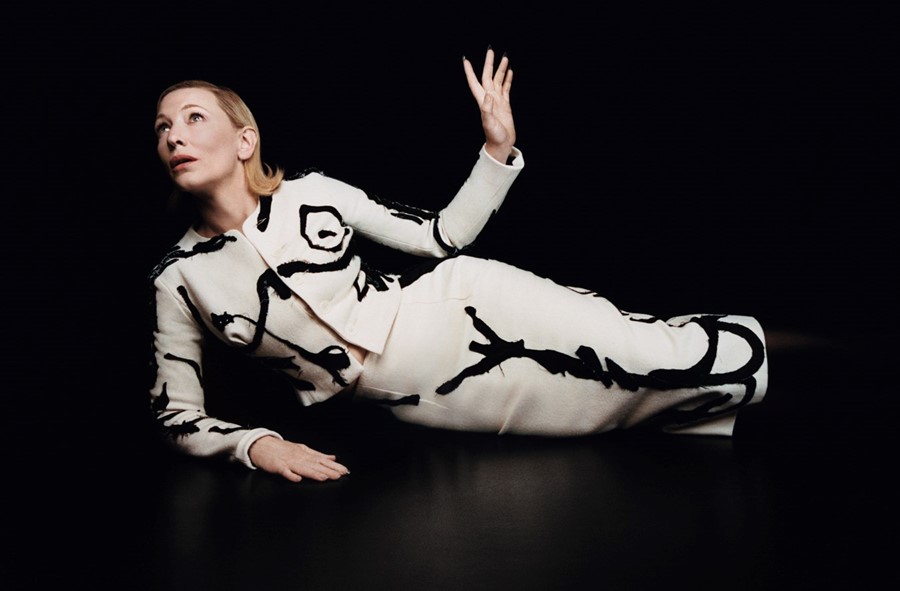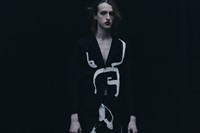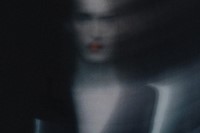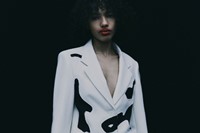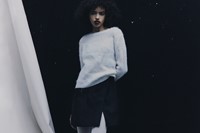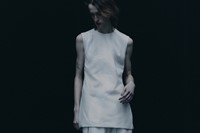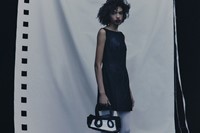“There was an irony to drawing what’s under the clothes that I found quite funny,” says Steve O Smith of his designs, which render the body emotionally in black and white
- Who is it? Steve O Smith is a British fashion designer and artist
- Why do I want it? Beautifully transformed versions of his own drawings, designed using traditional techniques to bring his art to life in fabric
- Where can I find it? On Instagram at @steve_o_smith
Who is it? Steve O Smith stands in his kitchen-turned-design studio at home in north London, leafing through a few slightly tattered sketchbooks from a stacked archive of works. Inside the pages, his intuitive black acrylic and pencil drawings only sometimes resemble figures, other times they’re a little more abstract. “These five sketchbooks here I did in about two weeks, or in a week maybe,” he says, nonchalantly. “In a day I can do about 100 drawings, but I don’t keep them all. It’s about trying to capture something. It’s about that gesture.”
Among these drawings are visions for garments – they’re each a trial or an error, they’re markings that hold a loose, unique idea for clothing. “When I last spoke to Fabio [Piras, MA Fashion course leader at Central Saint Martins], he said, ‘You know, you’re not the first designer to make their drawings.’ And it’s true. It’s actually quite ironic because it is exactly what most people do.” Smith’s instinctive method of recreating his black-and-white drawings came like a eureka moment in the process of designing his final collection at Central Saint Martins, where he graduated last year from the MA Fashion course. “My pre-collection had gone badly, and I had Covid, so I was here for seven days. I started using off-cuts because I’d run out of fabric and couldn’t leave, so I started pre-laying fabric and then sewing it down to try and imitate the marks I was making [on paper],” he says. Smith was on the precipice of what he’d discovered to be his signature. “As soon as I did it, everything made sense. It was always something that was on the tip of my tongue.”
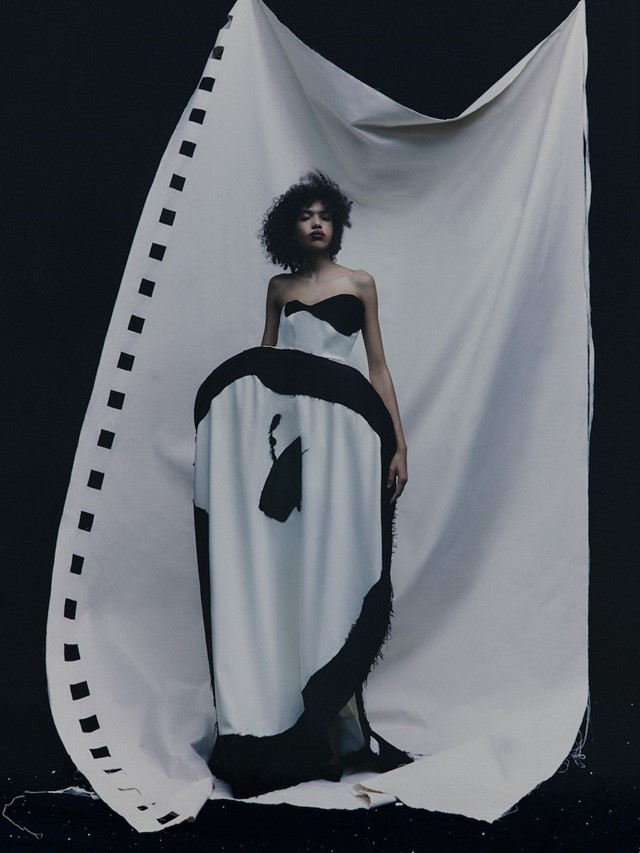
Born in Amsterdam although he moved to the UK at a young age, Smith was a creative child, constantly drawing and with a slightly anachronistic obsession with curtains and interiors. He later learned to sew and pattern cut at the Rhode Island School of Design. “It was pre-Trump, pre-Brexit. It was quite different from how it is now. The school was very Bauhaus – there was no outsourcing, and I ended up with a lot of practical skills.” Later arriving at Central Saint Martins in London, he deleted his preceding work from his Instagram, turning a blank page on his design journey. After some tough love from tutors he returned to his love of drawing. Much of his visual references now come from pieces of art: sketches by Julien d’Ys, Picasso, Willem de Kooning and George Grosz decorate the walls of his flat – it was George Cruikshank’s 1820s series Monstrosities, a satire of the era’s excessive fashions, that formed the basis to his MA collection. Surveying through their work in books at the library, Smith took on their emotional, spontaneous style, “then I disregarded them all, and I started doing my own drawings.”
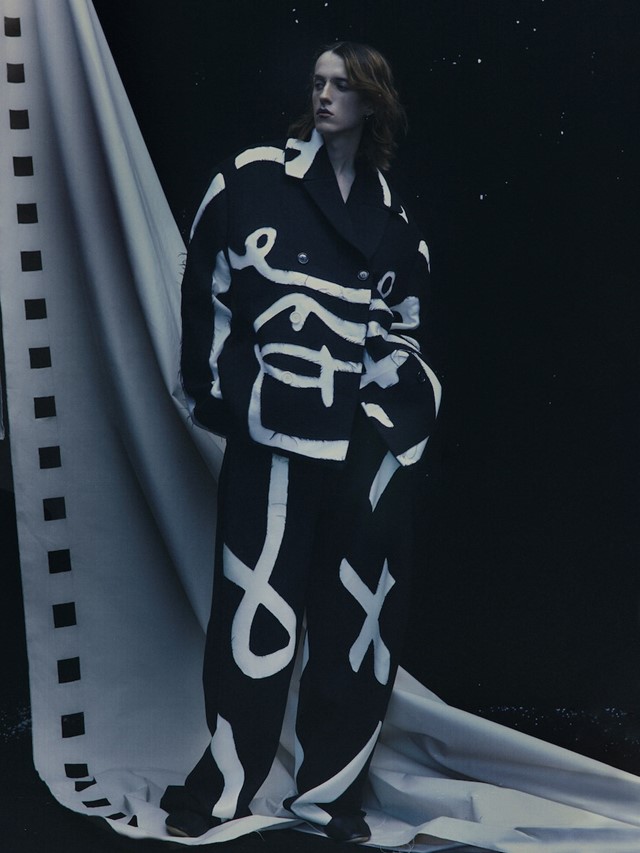
Why do I want it? The inspiration for Smith’s new collection, Figures, came from two looks designed in the MA collection – both worn by Cate Blanchett in AnOther Magazine’s most recent Spring/Summer 2023 issue. Enrolling in a figure drawing programme at the Royal Drawing School, he refined his method of drawing and painting real-life bodies. “If you think about it, pattern cutting is drawing on a figure, the same way that a canvas fits around a frame. There was an irony to drawing what’s under the clothes that I found quite funny.” While atop the monochromatic, voluminous garments are thick, fluid lines, underneath the layers of the new collection hides more complicated detail – hidden corsetry, bustle pillows, bum rolls and ruffles provide the structure to give garments the same weightlessness as his abstract drawings. A new technique that Smith calls ‘relief applique’ sees him pattern out his designs, then cut away with scissors to reveal the lines underneath, while their raw edges organically fray with time. With some pieces made using knitting machines (which he refers to as the “first 3D printers”), Smith’s fluid lines flow through the garment through intarsia. “There’s so many ways of communicating these drawings using the traditions and the amazing skills that exist within garment construction. So for me, it’s really been about pushing that forward.”
The work caught the attention of stylist Harry Lambert, who offered to style the new collection – his first since his graduating collection was presented just over a year ago. The striking new lookbook lensed by Daniel Archer sees the models become the drawings, captured in front of a draped sheet of paper, and bringing to life the acrylic and pencil etchings that serve as their inspiration. The process is highly emotional. “It’s a very human thing to do a drawing, it’s one of the first things we ever did, right? A drawing is a work of fiction because you don’t see the lines, we invent them. When I start to translate them [into clothing], it’s like [the drawings] are little talismans, and I think they’re really beautiful.” Mindlessly blotting black ink to paper, Smith sees a world of opportunity. “I think I’m one per cent of the way there. I still think that there’s so many things I can do with it, and that’s what's exciting about it to me.”
Where can I find it? On Instagram, and through his website which will relaunch later this month.
